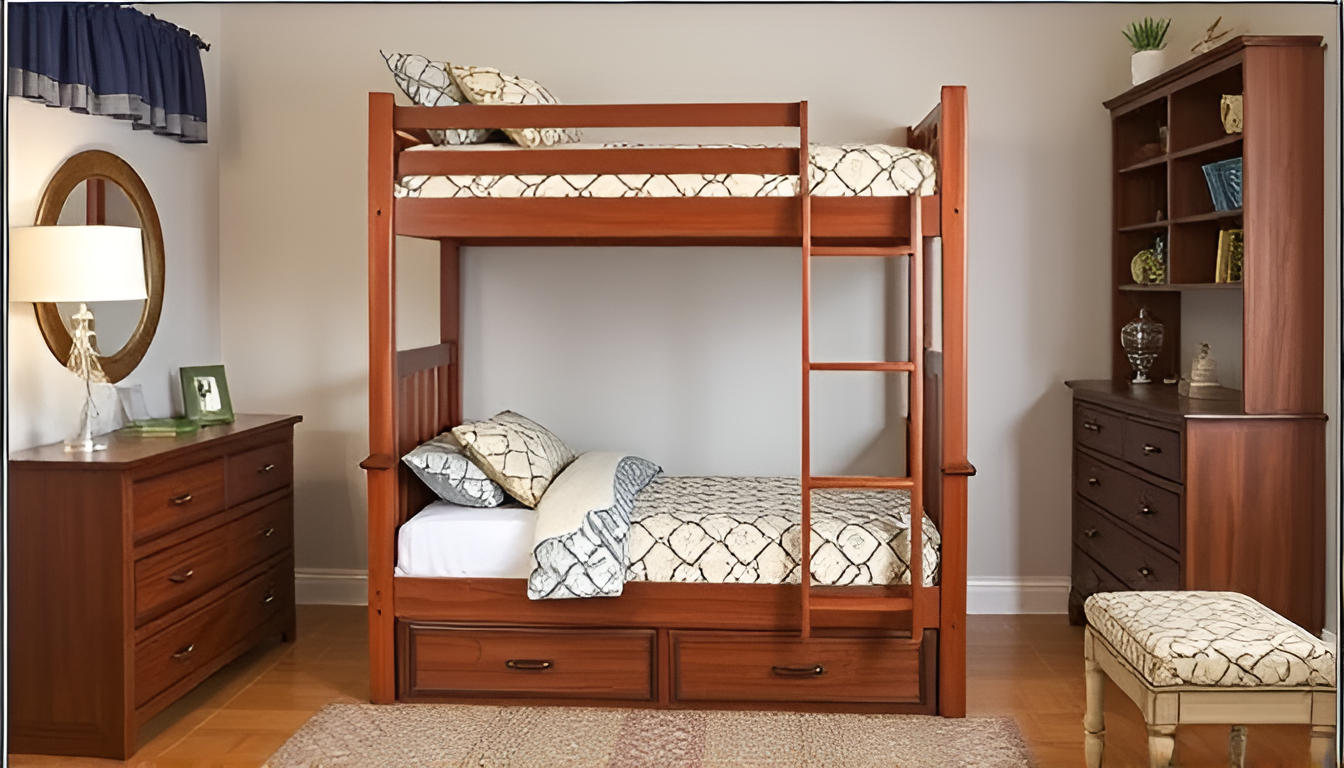When it comes to furnishing a child’s room, bunk beds are often a top choice for parents looking to optimize space while ensuring a fun and functional environment for their kids. Whether your little ones are sharing a room or you want to create a cozy guest space, a well-chosen bunk bed can be the centerpiece of a child’s bedroom. However, selecting the right bunk bed involves more than just picking the first attractive option you see. This article serves as a thorough checklist to guide parents through the essential considerations for shopping for bunk beds, ensuring that you make a choice that meets safety, functionality, and style needs.
Understanding Shopping for Bunk Beds
Before discuus into the details, it’s essential to understand what bunk beds are and the types available on the market. Bunk beds are essentially two beds stacked on top of each other, utilizing vertical space efficiently. They come in various styles, including traditional twin-over-twin designs, twin-over-full configurations, and even L-shaped designs that feature a lofted bed combined with a separate sleeping area.
Understanding the various types and configurations available will set the stage for a more informed decision-making process.
Safety First: The Non-Negotiables
Safety should always be the foremost consideration when shopping for bunk beds. The Consumer Product Safety Commission (CPSC) has established guidelines to help ensure the safety of bunk beds. Here are some critical safety features to look for:
- Sturdy Construction: A bunk bed should be made from high-quality materials, such as solid wood or heavy-duty metal, to withstand the weight of children climbing and jumping on it.
- Guardrails: Properly designed guardrails are essential to prevent falls from the top bunk. Look for beds with guardrails that extend at least 5 inches above the mattress height.
- Ladder Design: The ladder should be easy to climb, with a secure grip and wide rungs. Some bunk beds come with built-in ladders, while others offer detachable options.
- Weight Limit: Each bunk bed has a maximum weight limit, which you should respect. Make sure to check the manufacturer’s recommendations to avoid overloading the bed.
- Mattress Size: Ensure the mattress fits snugly within the bed frame. A mattress that is too thick or too thin can compromise safety.
Functionality and Versatility
Bunk beds are prized for their ability to maximize space, but their functionality can vary widely based on design and features. Consider the following aspects when evaluating functionality:
- Storage Options: Many modern bunk beds come equipped with built-in storage options, such as drawers, shelves, or even a desk underneath the lower bunk. This can be particularly useful in smaller rooms where floor space is at a premium.
- Convertible Designs: Some bunk beds can be converted into two separate beds when the children no longer need to share a room. This feature can extend the life of your purchase and provide greater flexibility as your children’s needs change.
- Space Efficiency: Think about the room layout and how the bunk bed will fit in the space. Some designs may require more clearance than others, especially if you have low ceilings.
Comfort Considerations
The comfort of your children is paramount. Keep these factors in mind when shopping for bunk beds:
- Mattress Selection: The choice of mattress is as crucial as the bed frame itself. Look for comfortable, supportive mattresses that meet your children’s specific needs, whether they prefer memory foam, innerspring, or hybrid options.
- Room Temperature: Consider the room’s temperature and ventilation. Bunk beds can sometimes be warmer than traditional beds, especially if the upper bunk is situated near a ceiling or wall. Ensure proper air circulation.
- Bedding and Accessories: Choosing the right bedding can enhance the comfort and aesthetic appeal of the bunk bed. Look for breathable fabrics and cozy blankets to keep your children comfortable throughout the night.
Style and Aesthetic Appeal
A bunk bed can significantly impact the overall look of a child’s room. Here are some tips to keep the aesthetic in mind befor shopping for bunk beds:
- Theme Coordination: Consider your child’s interests and the room’s theme. Whether it’s a whimsical fairy tale, sports, or a nature theme, various bunk bed designs can complement the decor.
- Color and Finish: Bunk beds come in various colors and finishes, from classic wood tones to contemporary whites and grays. Choose a color that fits seamlessly with the rest of the room.
- Accessories: Think about how you can enhance the bed’s look with accessories. Fun bedspreads, decorative pillows, and wall decals can transform the space and make it more inviting.
Budgeting for Your Purchase
Budgeting is an integral part of any shopping process. Here’s how to approach your budget shopping for a bunk beds:
- Research Pricing: Before making a decision, research various brands and models to understand the price range. Bunk beds can vary significantly in cost based on material, design, and additional features.
- Consider Long-Term Investment: While it might be tempting to choose the cheapest option, remember that a bunk bed is an investment in your child’s comfort and safety. A higher upfront cost may lead to better durability and safety features.
- Watch for Sales: Look out for seasonal sales or promotional offers that can help you save money on your purchase.
Customer Reviews and Recommendations
When considering different options, customer reviews can provide invaluable insights. Here’s how to use them effectively:
- Check Online Reviews: Platforms like Amazon, Wayfair, and dedicated furniture stores often feature customer reviews that can give you a clearer picture of the bunk bed’s quality and functionality.
- Ask Other Parents: Don’t hesitate to reach out to friends or family who have purchased bunk beds. Their firsthand experiences can help you make a more informed decision.
- Consult Online Forums: Parenting forums and social media groups can provide helpful tips and recommendations based on collective experiences.
Environmental Considerations
As awareness of environmental issues grows, many parents are looking for sustainable options for their children’s furniture. Here are some points to consider before shopping for bunk beds:
- Materials: Choose bunk beds made from sustainable materials, such as FSC-certified wood or non-toxic finishes. This not only contributes to environmental conservation but also ensures that the bed is free from harmful chemicals.
- Longevity: A durable bunk bed that lasts for years can minimize waste, making it a more environmentally friendly choice in the long run.
- Recycling Options: Consider how the bunk bed can be disposed of responsibly when it’s time to replace it. Some companies offer recycling programs for old furniture.
Final Thoughts
Shopping for a bunk bed is an exciting journey that can significantly enhance your child’s bedroom. By keeping safety, functionality, comfort, style, budgeting, and environmental considerations in mind, you can make a well-informed decision that meets your family’s needs. Remember that a bunk bed is not just a place for sleep; it can be a space for creativity, bonding, and memories that last a lifetime.





